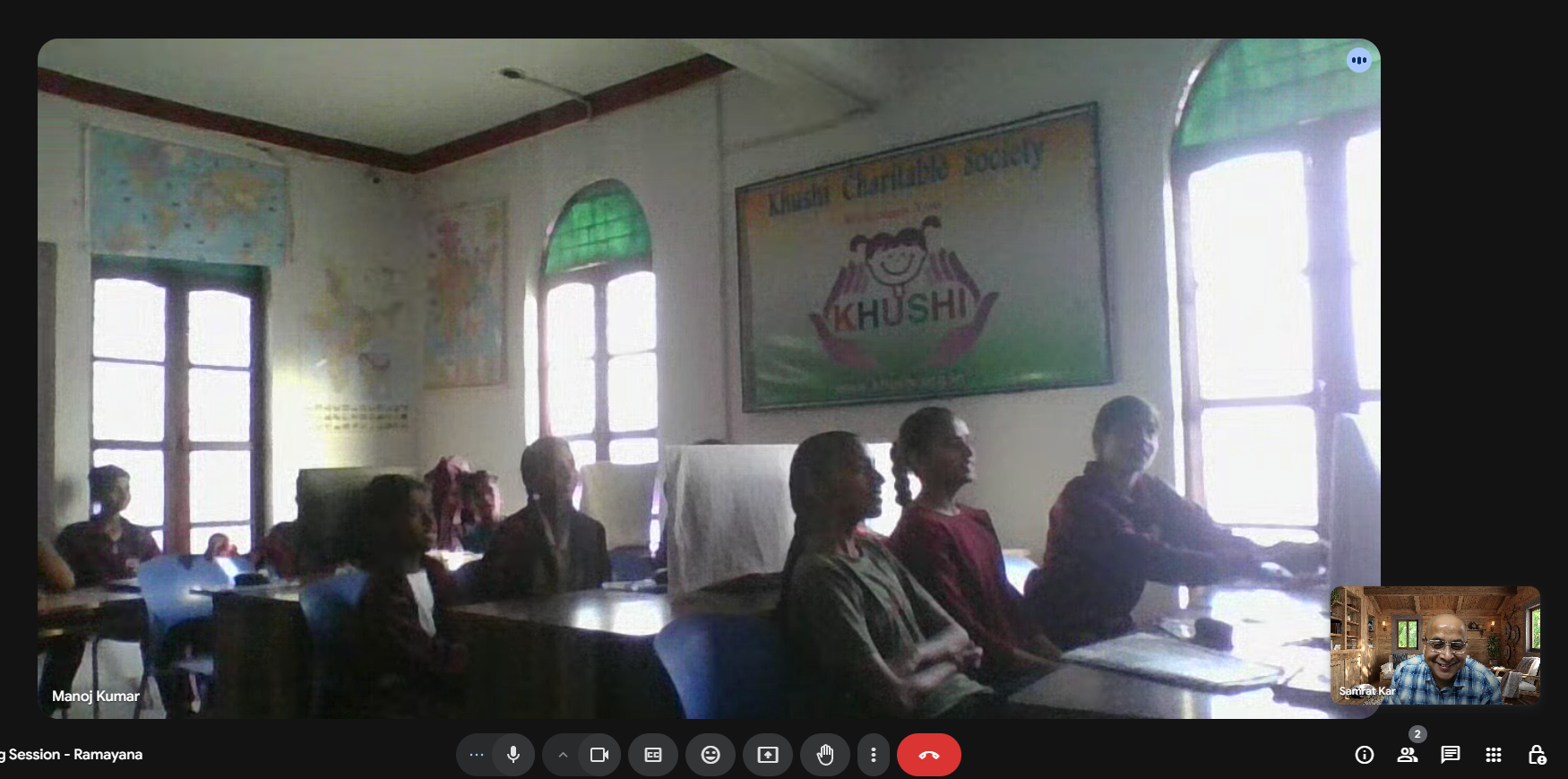The Ramayana Journey
The Ramayana - a journey - one story at a time
| Sr# | Date | Milestone | Event Title | Details |
|---|---|---|---|---|
| 1 | 02-08-2025 | The beginning | Grief kindles inspiration | Overtaken by grief of the killing of a curlew, Valmiki composes Ramayana! |
| 2 | 2-15-2025 | Milestone 1, 2, 3 | Tataka killed | Vishvamitra takes Rama and Lakshmana to forest. They kill Taraka as their first errand and Malada and Karusha |
| 3 | 3-01-2025 | Milestone 4 | The fruits of grit | Subahu killed and Marich thrown away. Descent of Ganges |
| 4 | 3-08-2025 | Milestone 5, 6 | The Amrit Manthan | At Vishala, Datyas and Adityas churn the ocean with Vasuki to get Amrita - the nectar of immortality |
| 5 | 3-22-2025 | Milestones 7, 8, 9 | Arrival at Mithila. Shabala & Vishvamitra | Vishvaitra, Rama, and Lakshmana reached Mithila. Shatananda the son of Gautama and Ahalya tells the story of Vishvamitra to Rama and Lakshmana. |
| 6 | 4-5-2025 | The grand wedding | The Swayamvara | Rama wins the Swayamvara of Sita by breaking the bow of Shiva. |
Wordcloud of the Ramayana
The Mindmap of the journey covered so far
As of 04-05-2025
Weekly notes
02-08-2025 - The beginning in grief
The Ramayana is an ancient Indian epic that narrates the life of Prince Rama, his wife Sita, and his loyal companion Hanuman. It is attributed to the sage Valmiki and is written in Sanskrit. The story is divided into seven Kandas (books) and consists of about 24,000 verses. As with majority of the epics both in Indian and western traditions, the epic starts with an event of excruciating grief. The sage Valmiki witnesses a hunter kill one of a pair of mating krauncha birds (a type of curlew or sarus crane). Seeing the surviving bird’s grief, Valmiki is overcome with compassion and spontaneously utters a curse in metrical verse:
“Mā niṣāda pratiṣṭhāṁ tvam agamaḥ śāśvatīḥ samāḥ yat krauñca-mithunād ekam avadhīḥ kāma-mohitam”
(Meaning: “O hunter, may you never find peace for eternity, as you have killed one of this pair of krauncha birds while it was overcome with love.”)
This idea is detailed in the following article - https://samratkar.github.io/2025/02/22/Ramayana-001-grief.html
02-15-2025 - Tataka killed
1. The killing of Tataka
The advent of Taraka in that flourishing kingdom and then all prosperity vanishing is a metaphor of the material nature of fleeing events and possessions in the world. The kingdom was blessed by Indra and was flourishing. But the moment Tataka came who was all powerful (shows power corrupts), and would change her form on her own wish (signifiying fickle nature of mind and the changing nature of physical world), shows that the excesses led to the destruction of the land. And Tataka had to be killed, restoring peace and prosperity.
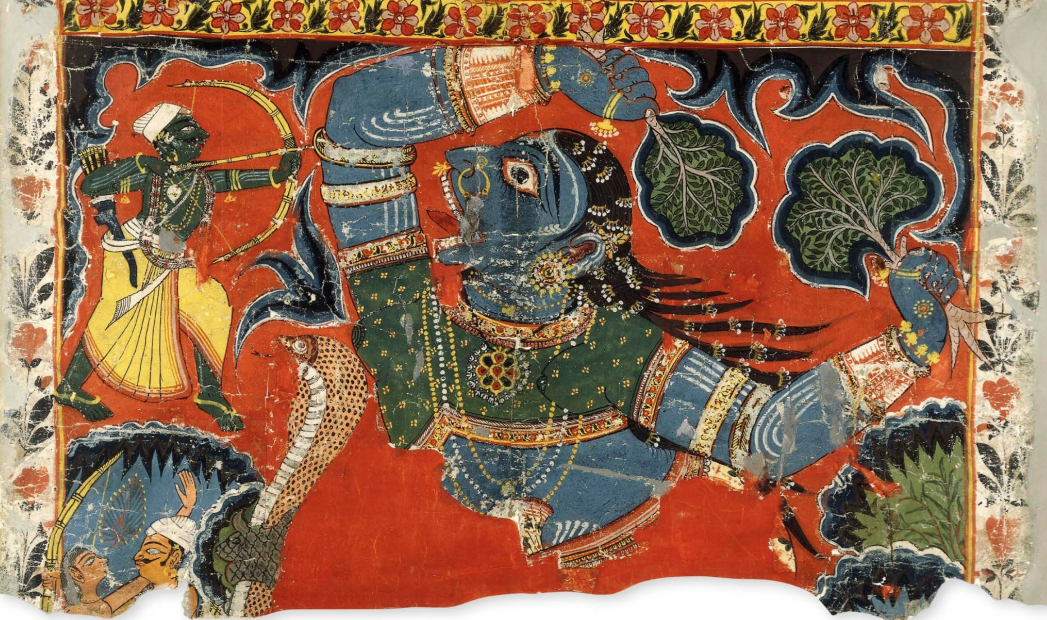
2. The class
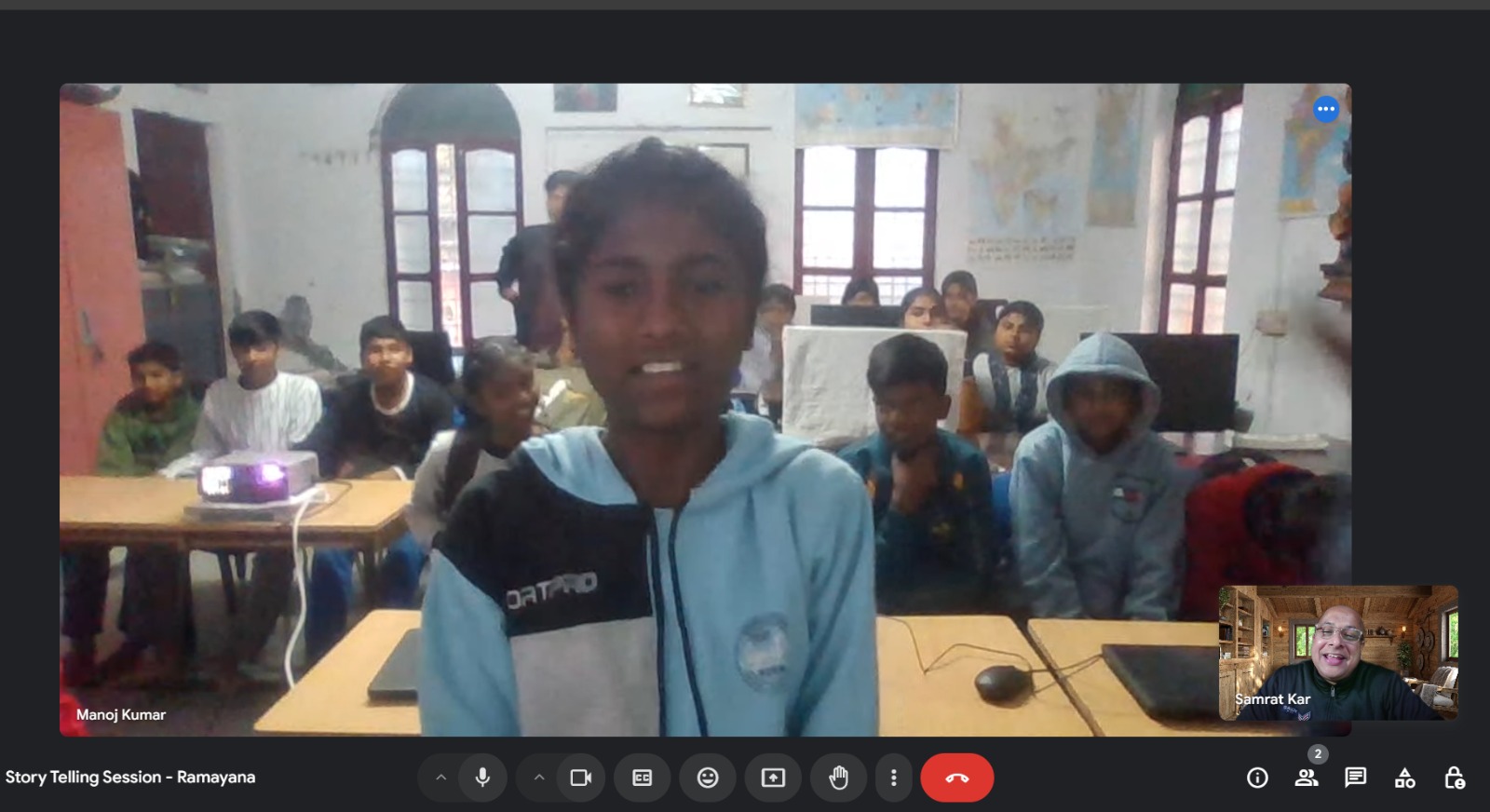
03-01-2025 - The fruits of grit
1. Conquering Siddhashrama, and descent of Ganga
The details discussion on how the grit, resilience and determination is beautifully portrayed in the sojourn of Rama to the forest and restoring peace at the Siddhashrama, is described in this article - https://samratkar.github.io/2025/02/23/Ramayana-002-toil.html
The story of the descent of the Ganges is itself another rendition of what is toil, resilience and grit. The entire story of systematic failure, the failure of the king Sagar, the failure of his sons, the failure of Bhagirath, and the eventual success of Ganga to descend to the earth is a beautiful tale of inspiration.
2. The class
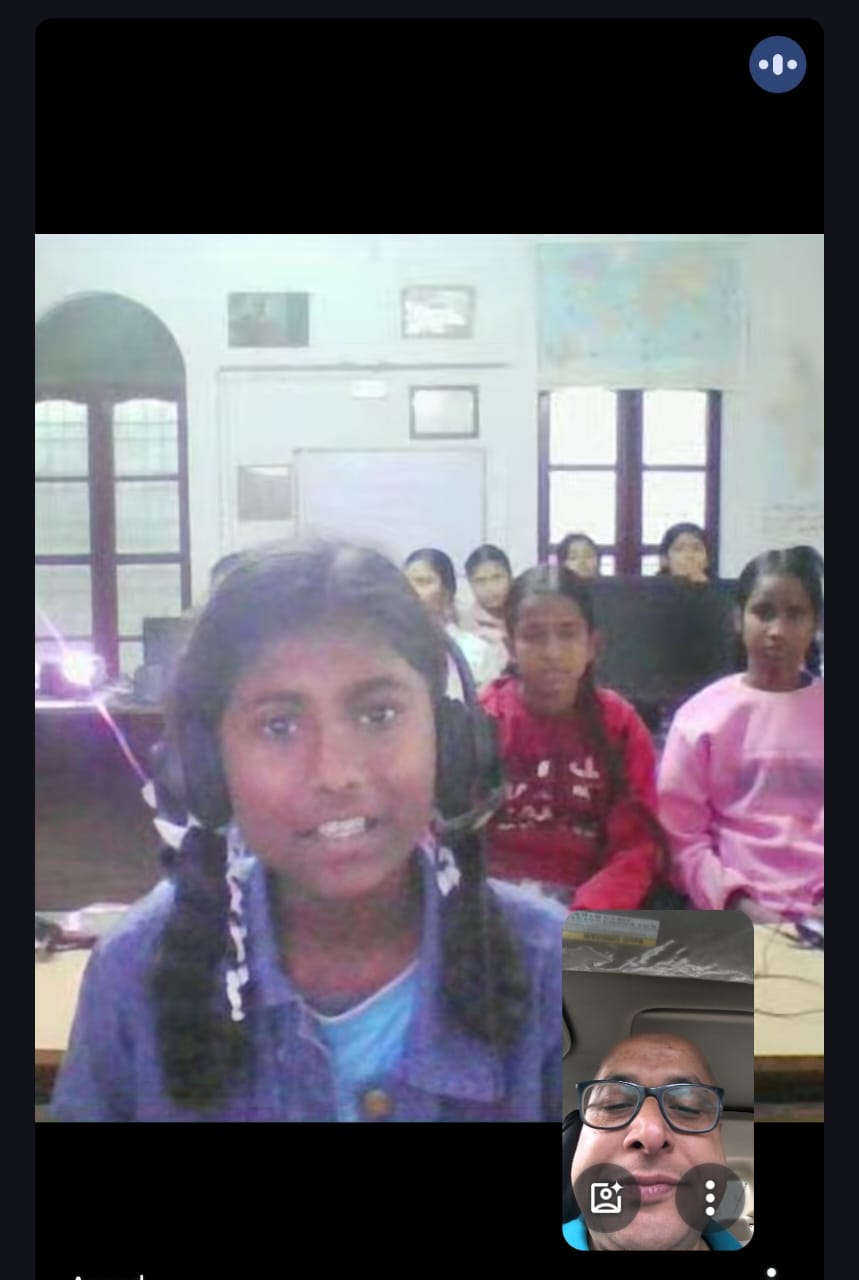
03-08-2025 - The Amrit Manthan
1. The Amrit Manthan
- Diversity and inclusion. Teamwork : The most powerful element of this tale is that after all hard work of churning the ocean, forming a cross functional all-inclusive team (polar opposite members - Daityas and Adityas), they eventually are able to reach the goal of getting the Amrit.
- Delayed gratification : When churning was in progess, there were emergence of the following elements that are always very dear to all humans. But the team chose not to take them. They chose to continue with the churning and not get distracted by the immediate gratification of these elements.
- Uchhaishravas - The horse of immense vitality and speed. It keeps running. There is always change, there is always speed. Nothing stays still. It alludes to the material nature of external life and its possessions.
- Kaustubha - The jewel of plenty. It signifies wealth and prosperity. It is the material wealth that we all covet for.
- Dhanavantari - The god of medicine. It signifies health and well-being. It is the material well-being that we all covet for.
- 600 million apsaras - The celestial nymphs. They signify beauty and love. It is the desire, lust and covetousness of beauty that makes us human. The team chose to ignore the beauty and the lust and continue with the churning.
- Varuni - The goddess of wine. It signifies intoxication and pleasure. It is the intoxication of life that we all covet for.
After letting go all of the above intermediate distraction, only then the team was able to get the Amrit - the ultimate goal of the endeavor.
- The inevitable fight - What all we covet in the material world, no matter how noble, is bound to trigger jealousy, anger, animosity. And humans would enter into conflict, and would in that sway of selfishness, harm each other, kill each other. For behind every murder, is wealth, land or women, they say. So, same thing happened here. Datyas and Devas entered into fierce battle, and Indra with some sort of treacheries was able to kill all the Daityas. And that led to Diti enter into 990 years of penance to have a son who would kill Indra who led the army of Devas. And as every human does, by hook or crook tries to save themselves, Indra starts coaxing and cajoling Diti during her austerities and wins her heart. She agrees not to have the son to kill him. But as fear does. It breaks all the nobilities of trust. He enters into the womb and cuts apart the embryo of Diti into 7 parts! Now, that was totally abominable. The incident shows to what level our Indriyas - senses can go to just save itself.

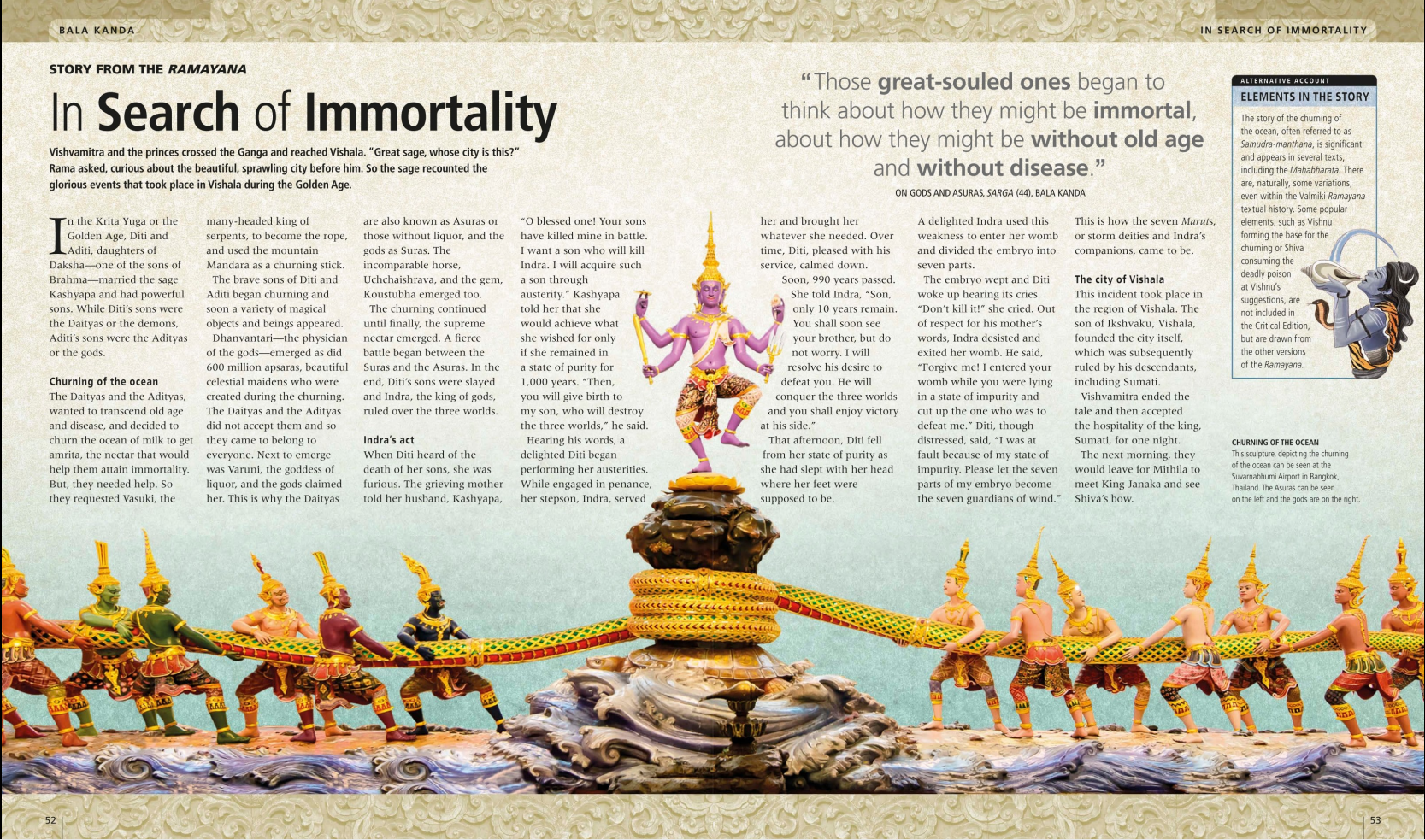
2. The students
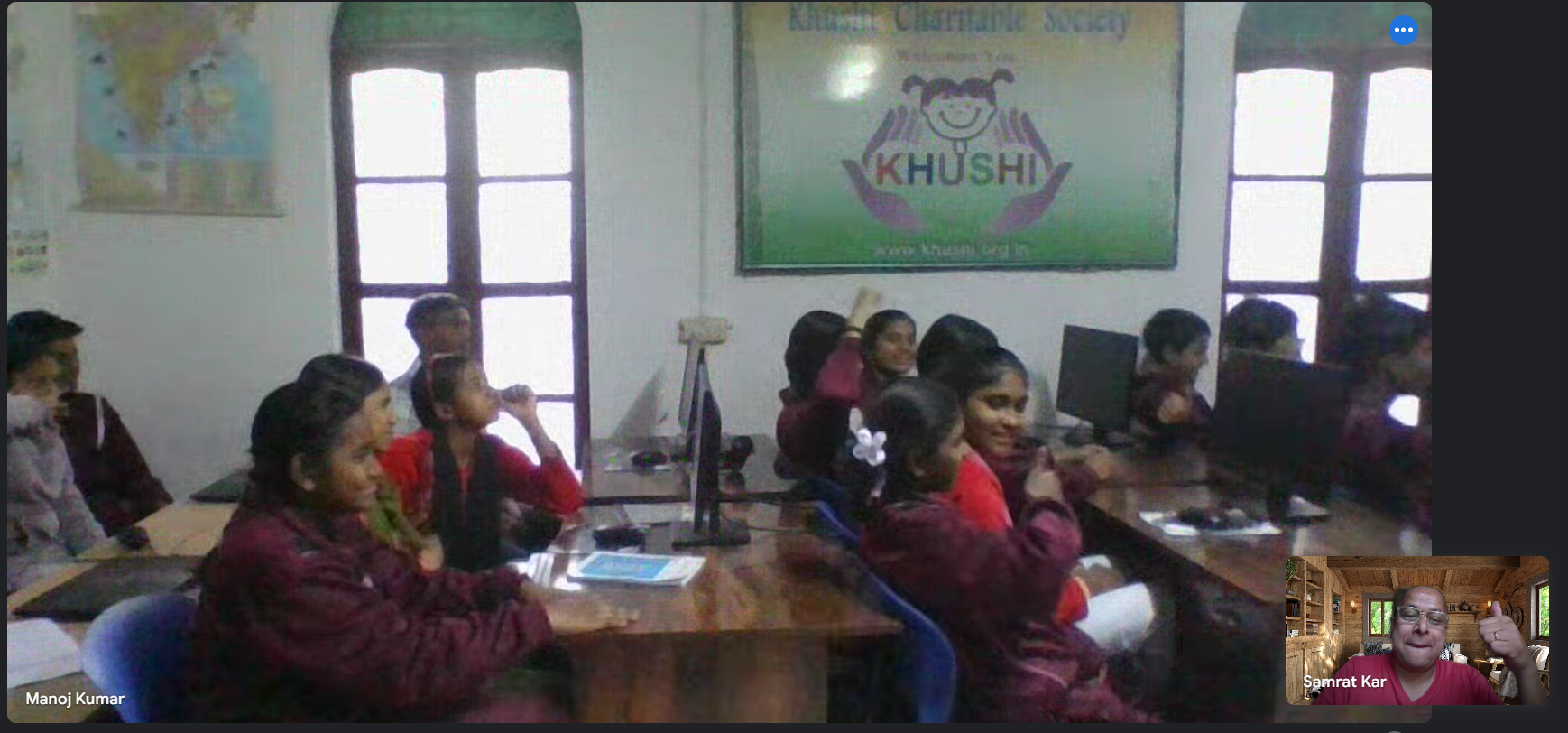
.png)
03-22-2025 - Arrival at Mithila
1. Ahalya’s liberation
She was the wife of the sage Gautama. She was cursed by her husband to become a stone for being unfaithful. She was liberated by Rama’s touch when he visited the ashram of Gautama.
The story of her being unfaithful is that Indra, the king of gods, took the form of Gautama and seduced her. She gave in to the temptation.
Indra stands for “Indriya” which is the senses. The story is a metaphor for the senses seducing the mind and leading it astray. Now, the path followed by Ahalya is not typically judged as a sin. The story just states the events.
Ahalya loved to be seen, to be appreciated, to be loved. Indra was a handsome man who was in love with Ahalya. And that is normal being human. Love is no way shown to be a sin. It is normal. And it happens.
Also, the jealousy and the anger of Gautama is shown when he finds that Ahalya has been unfaithful. It was common during those times to have multiple wives and husbands. But Gautama was overtaken by jealosy and possessiveness. And that is again humane. He abandons his wife and curses her to be a stone!
Ahalya had the fate to face the wrath. And she did face it. There was no avarice. There was no rebellion. She loved someone and she stood by her action, and was courageous enough to face the consequences. Certainly the path was astray. But not necessarily wrong. It was a choice. A humane choice.

2. The story of Vishvamitra. Grit and resilience.
Again another tale of being human. A powerful king. But he could not control his greed. Being blind in power, he covets for Shabala. The grit and determination of Vishvamitra is shown in the tale. He performs austerities of thousands of years to get Shabala. But he fails. He continues to move forward in the path of penance. But till that desire is there in him to covet other’s possessions, he is unable to defeat Vashishta and take Shabala. He then falls in love with Menaka and Rambha and gets distracted and loses all his power. But he does not stop. He continues the penance for another thousand years, till he is silent and disreless as a log of wood. It is then he becomes Brahmarshi.
Again, here, I would not glorify being a log of wood as the destination of humanity. Being desireless and lifeless is not the goal of being a human. It is just a random thought of insanity that Vishvamitra might have. Again that is his humanity - having lost all his love, all his wealth, all his power, he might have been in a state of life, where he might have found them worthless. So, he chose to be a log of wood, and he did so.
So, the point is not which destination is nobler. The point here is that the journey one takes, the grit one demonstrates, the resilience on shows, is what is glorified here, in the path of Visvamitra to become a Brahmarshi.
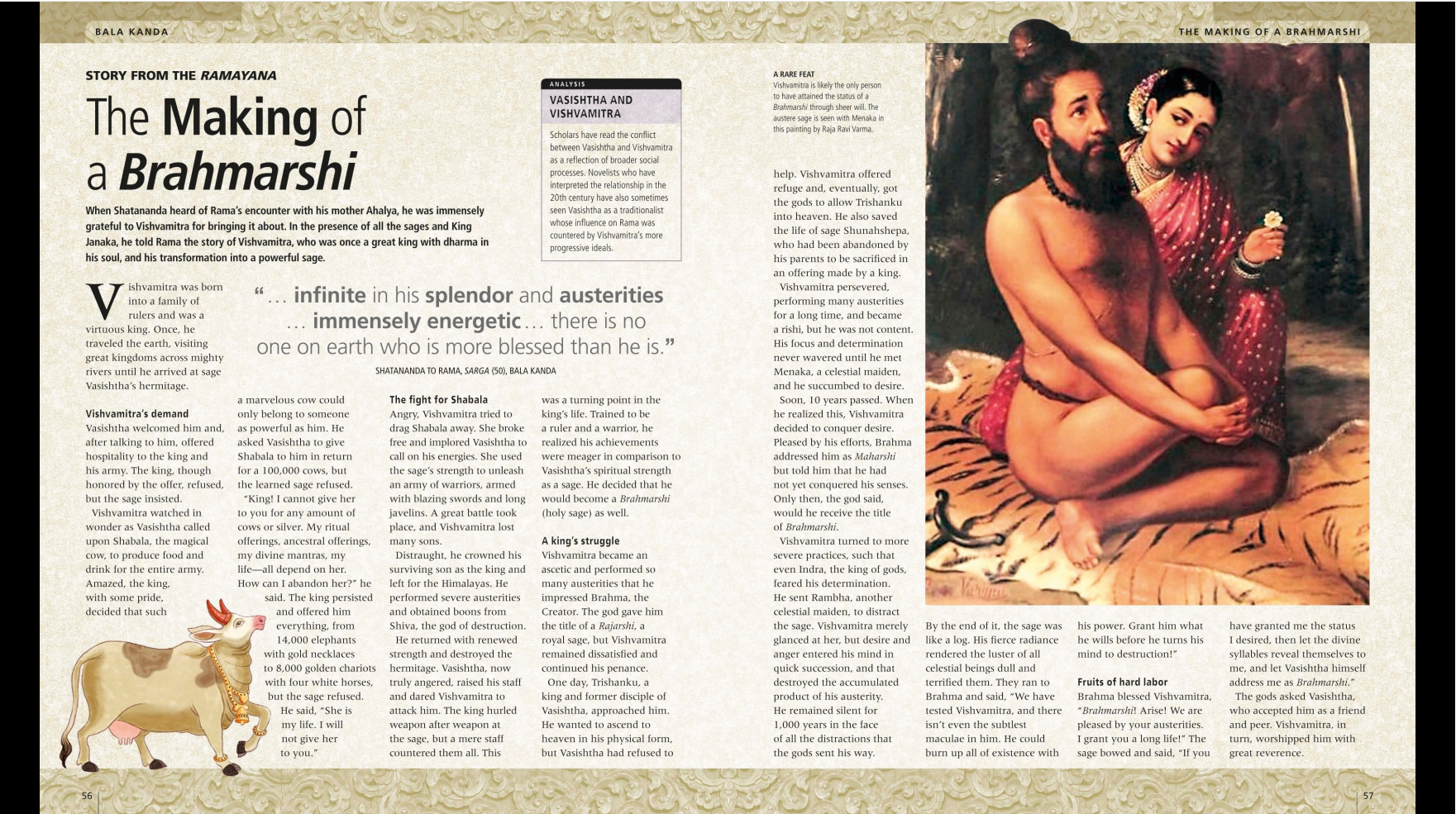
3. The students
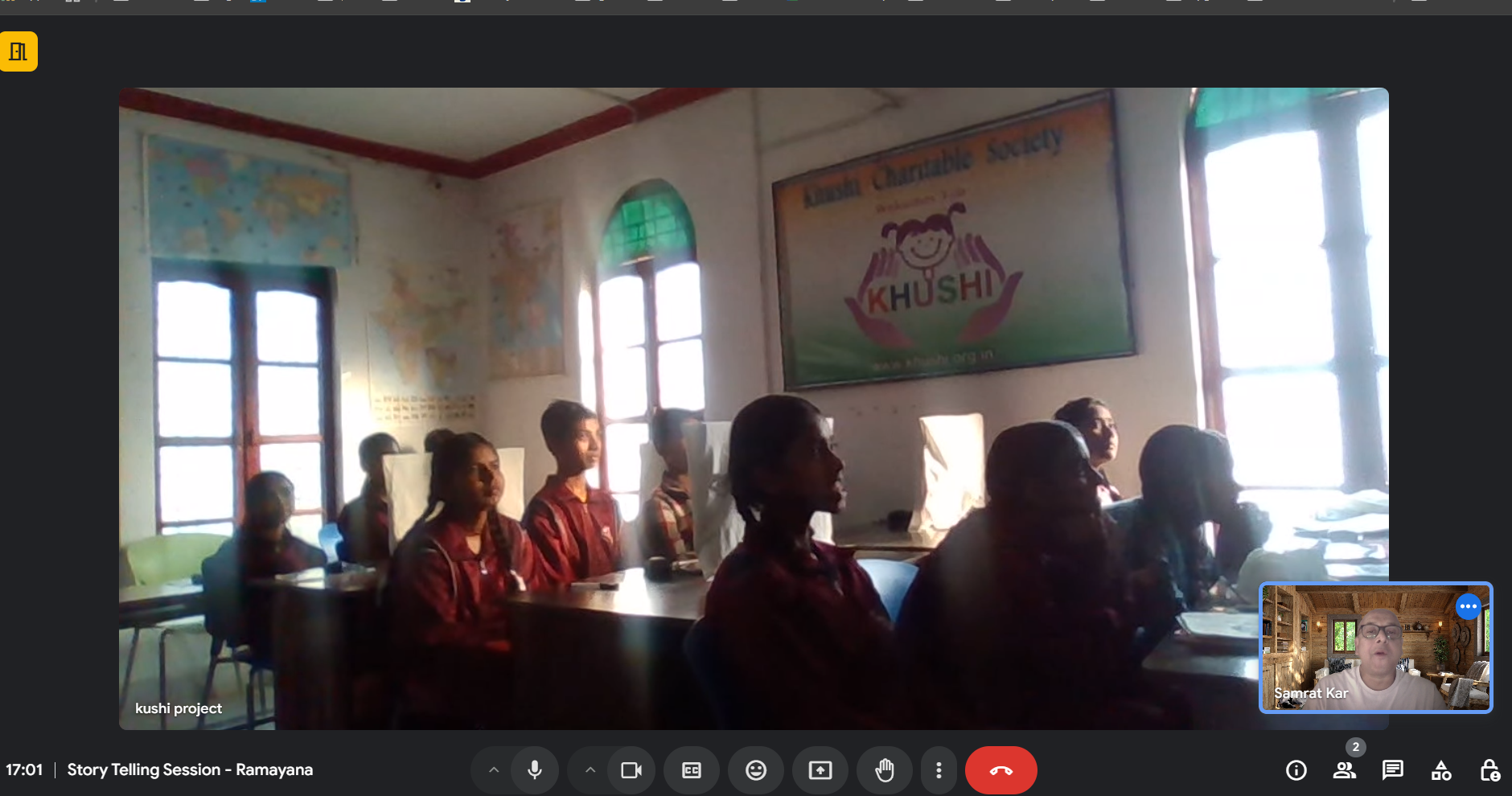
04-05-2025 - The grand wedding
1. The Swayamvara
The Swayamvara is a traditional practice in ancient India where a princess chooses her husband from among a group of suitors. In the case of Sita, the daughter of King Janaka, the Swayamvara was a grand event attended by many kings and princes. The challenge was to string the mighty bow of Lord Shiva, which only Rama was able to accomplish. This act not only demonstrated Rama’s strength but also his worthiness as Sita’s husband. The wedding was atteneded by the greatest sages like Vashishtha, Vamadeva, Katyayana, Markendya.
2. The ikshvaku dynasty
The Ikshvaku dynasty is one of the oldest and most revered dynasties in Hindu mythology. It is said to have been founded by Ikshvaku, the son of Manu, the progenitor of mankind. The dynasty is known for its righteous kings, including Lord Rama, who is considered the seventh avatar of Vishnu. The Ikshvaku dynasty is often associated with the principles of dharma (righteousness) and justice.

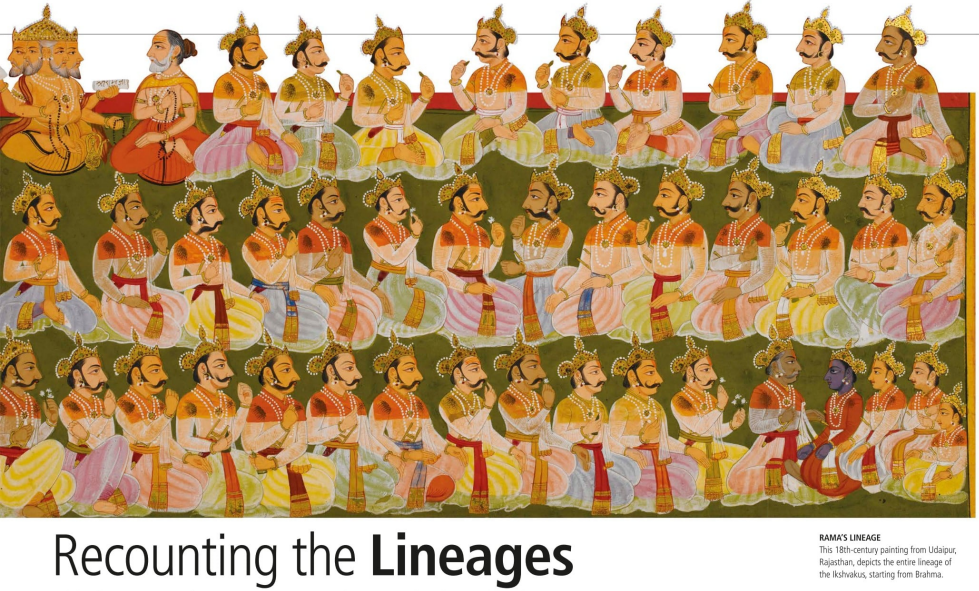
3. Shiva’s bow
The folklore goes that Daksha, son of Brahma, undertook a great sacrifice but did not invite Shiva. Shiva was angry and came and threatened to cut off heads of all Gods who were in the sacrifice. Later the Gods placated him and he left his bow there with Daksha. From then all the kings had the bow in their court but none could lift it.
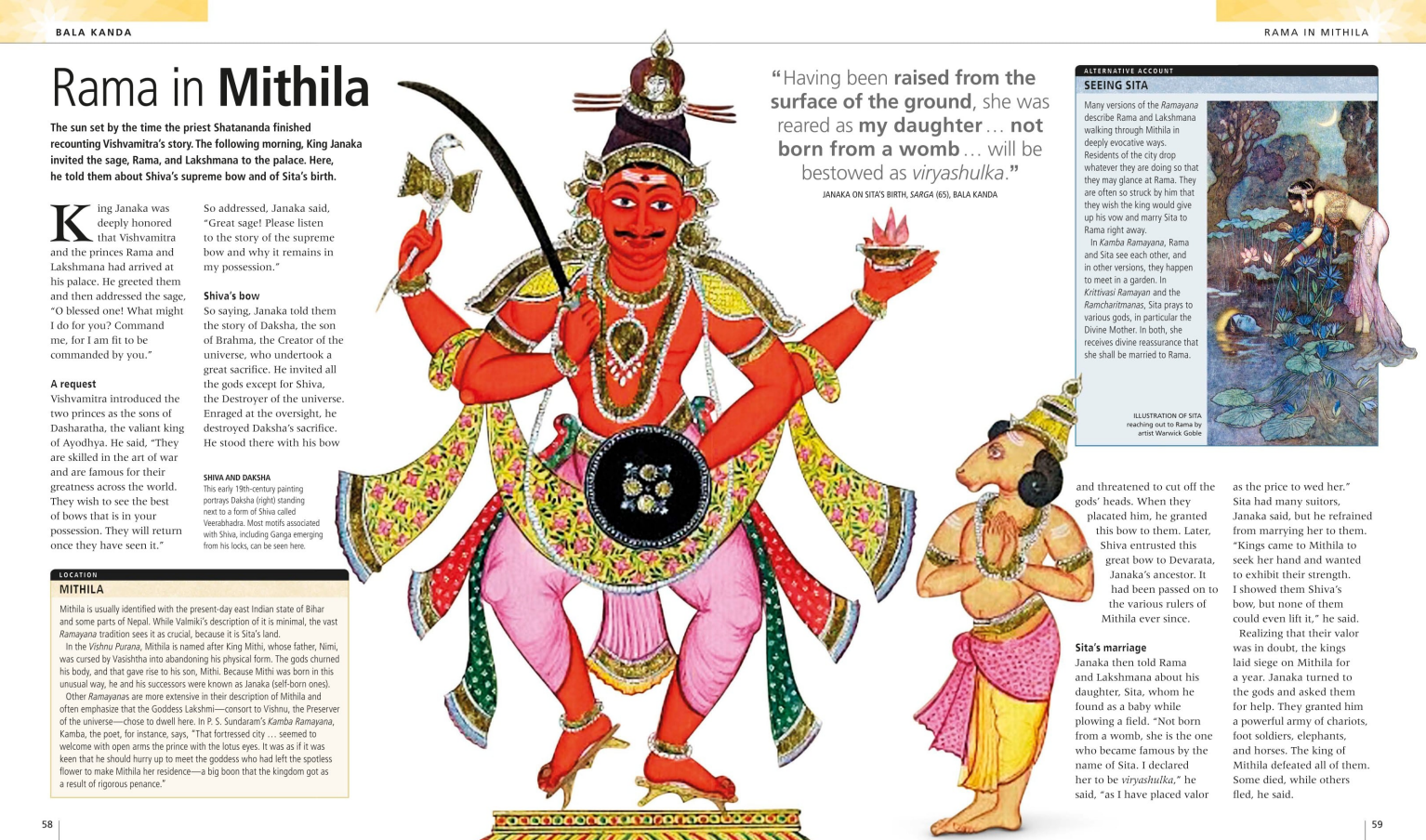
4. The students
